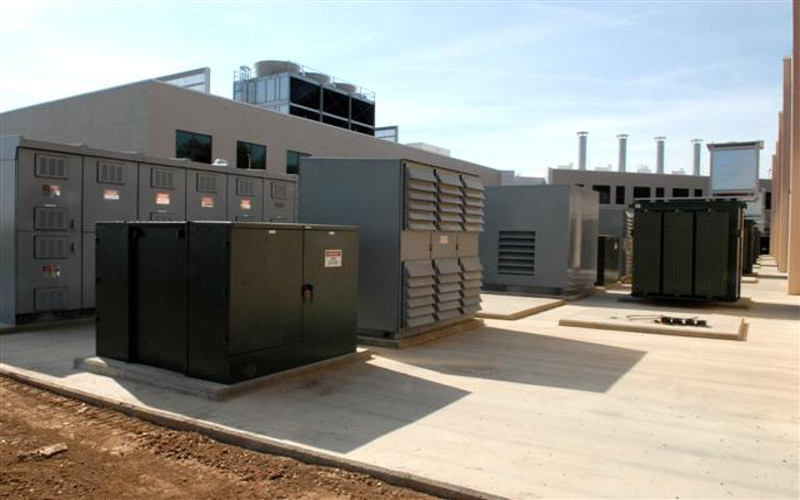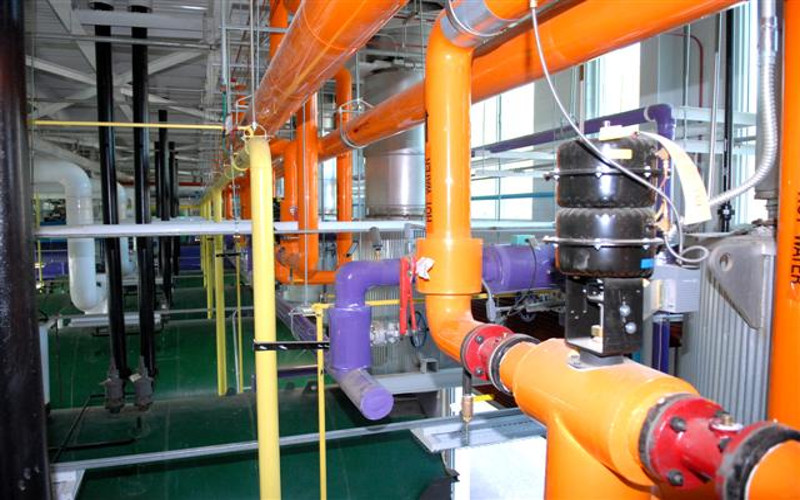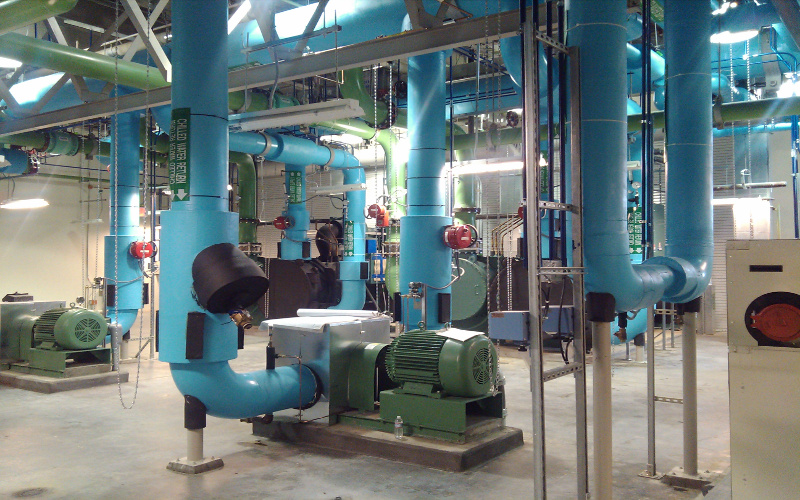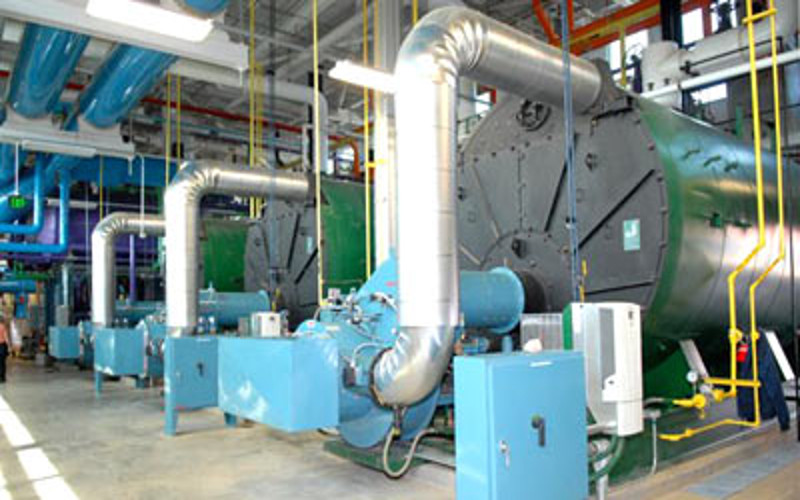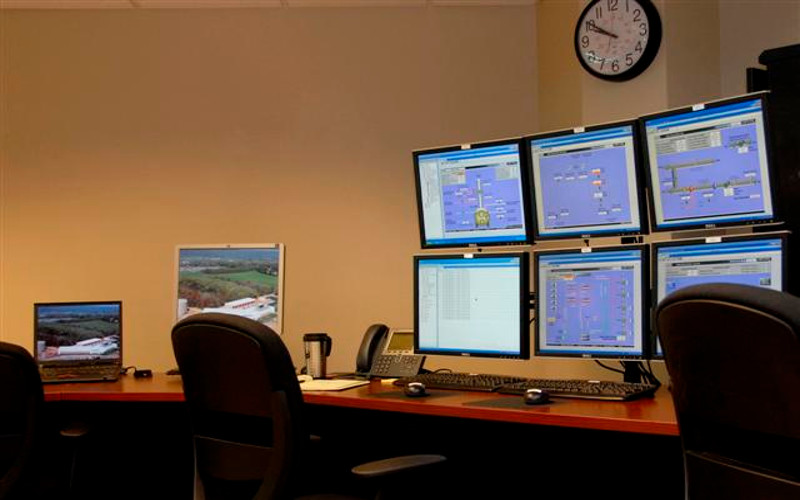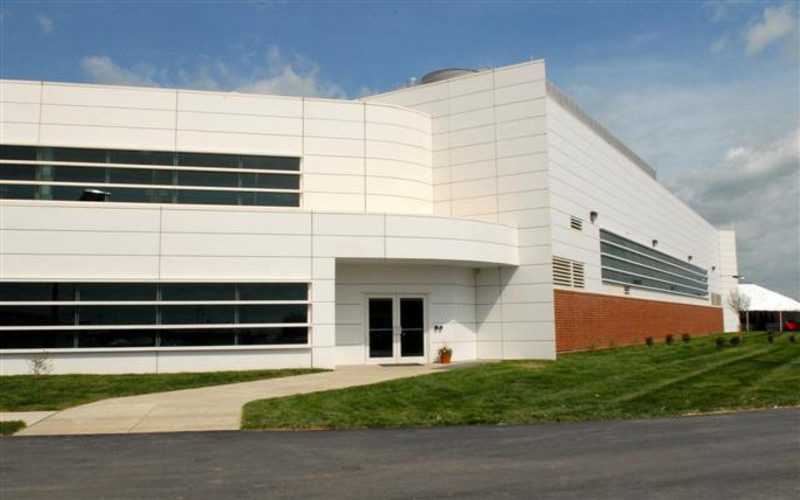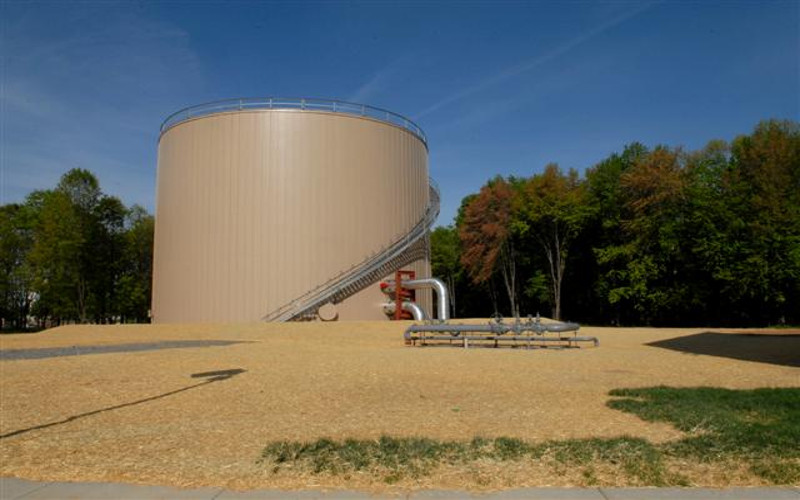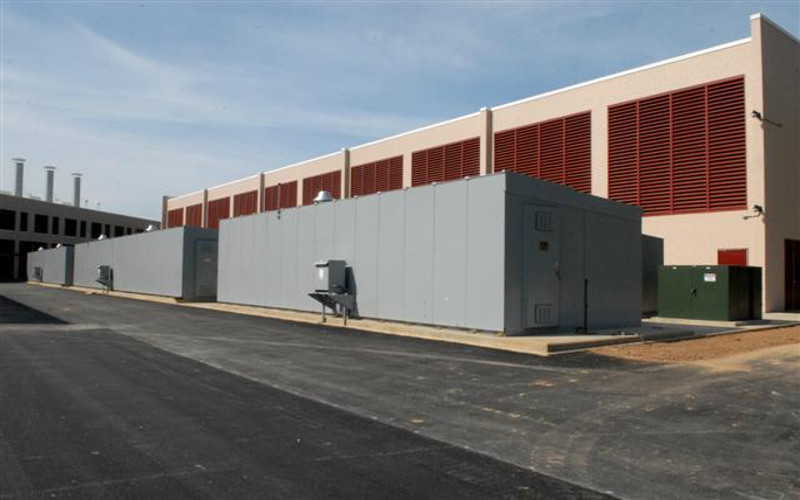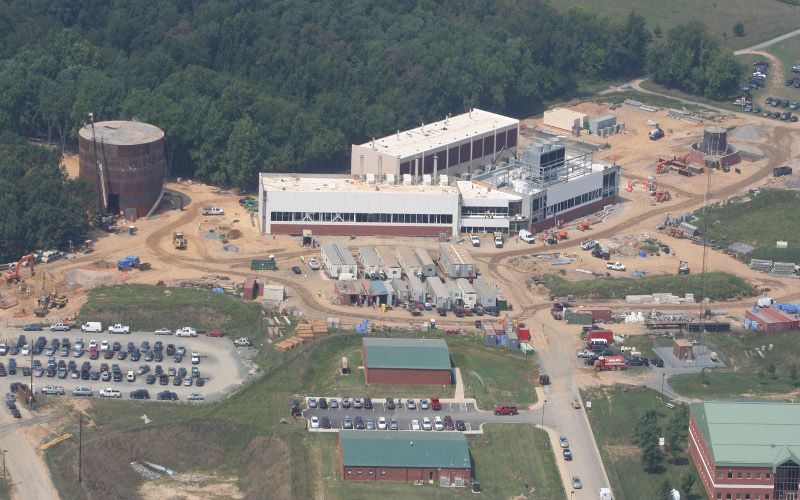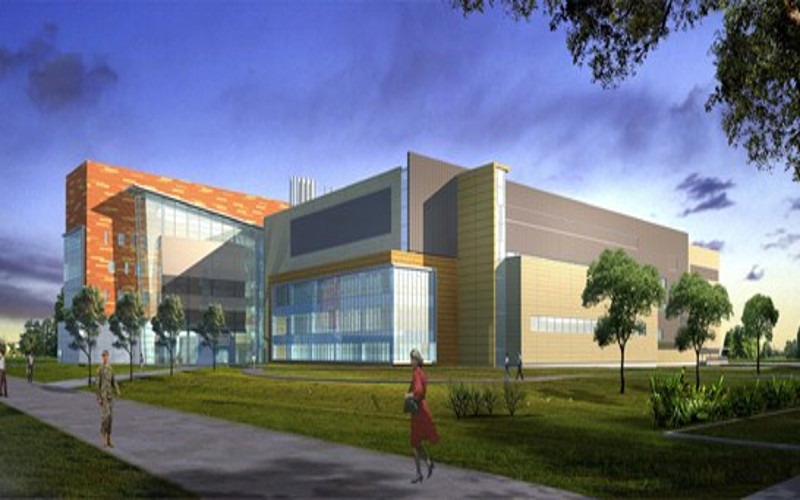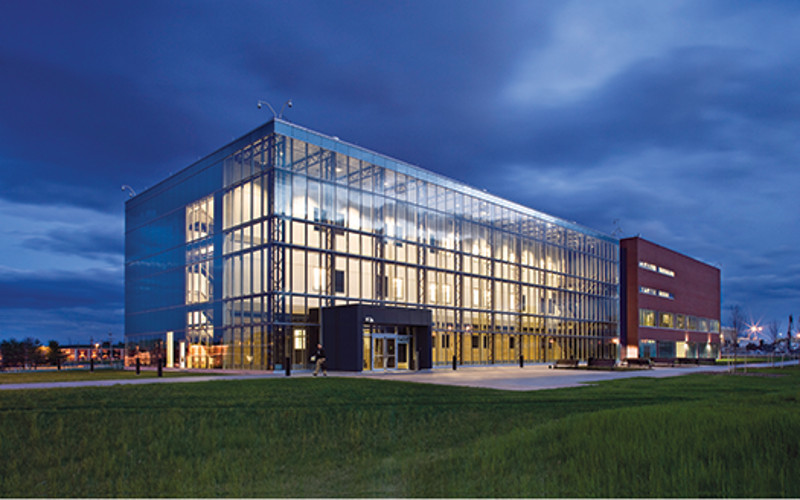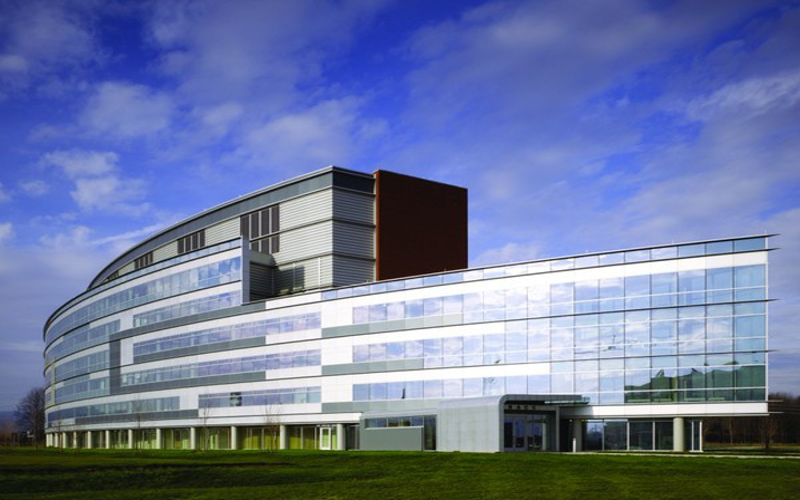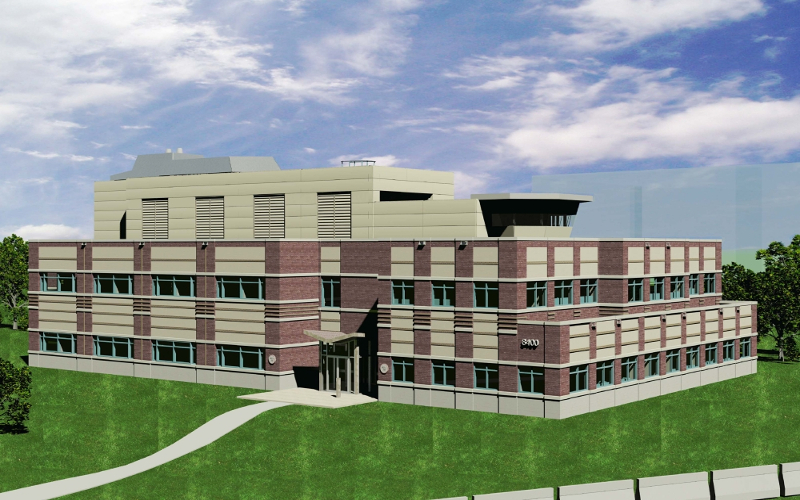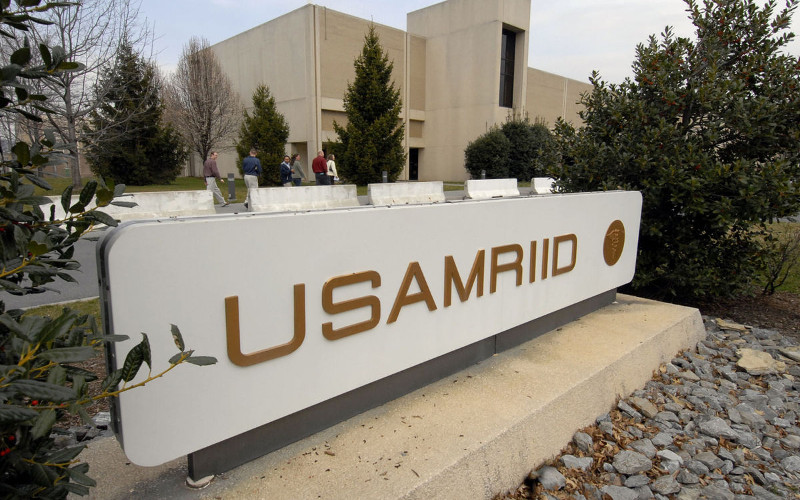Project Description
Project Name
Fort Detrick Microgrid
Location
National Interagency Biodefense Campus (NIBC), Fort Detrick, MD
Challenge
99.999% Availability Microgrid
Description:
The National Interagency Confederation for Biological Research (NICBR) is a biotechnology and biodefense partnership and collaborative environment of eight U.S. Federal government agencies. Early-on in the development of the National Interagency Biodefense Campus, (NIBC) Fort Detrick, Maryland, NICBR and Army leadership made a strategic decision to outsource the utility services of what would become the largest secured, multi-agency campus of Biosafety Level 3 and 4 laboratories in the world.
Chevron USA Inc. and its teaming partner, Keenan Development Associates, LLC, were competitively selected to develop an advanced energy generation and delivery system that would and feed energy to the entire biodefense campus through redundant, subsurface distribution systems owned by a single-purpose entity, Keenan Fort Detrick Energy, LLC (KFDE).
The NIBC Fort Detrick Microgrid was developed as a Public Private Partnership and contracted under a Microgrid as a Service (MaaS) business model. The MaaS structure incorporates what is essentially a Service Level Agreement (SLA) that defines delivery attributes such as, 1) system availabilities, 2) power quality, and 3) system efficiency. The SLA is backed by liquidated damage penalties for not achieving Key Performance Indicators (KPIs) associated with it.
National Interagency Biodefense Campus (NIBC)
Largest Concentration of Secured Bio-Safety Labs in the World
All four of PowerSurety’s principals were responsible for driving and managing the development and delivery of this first-of-its-kind Fort Detrick Microgrid project while under the employ of Chevron USA Inc. This direct participation in project development included integrating the input and requirements of key U.S. Army and Navy, National Institutes of Health (NIH), U.S. Army Corps of Engineers, Department of Homeland Security, and State of Maryland officials; overseeing design; and actively participating in the competitive contractor team selection process.
Due to the size and complexity of the project, PowerSurety principals actively guided the project team through its complex planning, development, design, engineering, economic and cost/pricing analysis, structured financing, and contract negotiation/award processes.
Since the Fort Detrick Microgrid achieved commercial operation in April, 2008, none of the NIBC’s tenants have ever experienced an unplanned interruption of utility services and have continuously benefitted from power quality levels that exceed Information Technology Industry Council (ITIC) requirements. These ITIC requirements are determined by a curve that defines voltage characteristics that must be met for the most sensitive of electronic equipment.
2008 National Council For Public-Private Partnerships Award Winner
| Public Sector Partner: | U.S. Army Garrison, Fort Detrick |
| Private Sector Partner: | Keenan Development Associates, LLC |
| Commercial Structure | Public-Private Partnership |
| Contract Structure | Microgrid as a Service |
| Contract Vehicle | Enhanced-Use Lease |
| Design-Builder | Chevron USA Inc. |
| Asset Owner | First Reserve Corp. (via acquisition) |
| Facility Operator | Energy Systems Group, LLC (via acquisition) |

The technical project development team was primarily comprised of PowerSurety principals who took the lead on site integration, technical development, system costs and economics, and permitting. As the asset owner, the Keenan Development team was responsible for federal contracting, land management, commercial structure, financing, and ownership of the facility. The Keenan/Chevron team was selected over 20+ teams that submitted proposals, due to the strength of its energy resiliency plan and its ability to fast-track the plant’s development and design-build process in order to align with the schedules of lab construction projects already underway. The NIBC microgrid was required to be substantially complete prior to the commissioning of the first lab, which had a multiple month head start.
The $105 million initial phase of the five-phase microgrid project was financed through the issuance of a 25-year private revenue bond. Per the terms of the Enhanced-Use Lease (EUL) the land was outleased under, the Army receives in-kind consideration equal to the fair market value of the leased assets in the form of capital improvements and other services on the Fort Detrick garrison.
Microgrid as a Service (Maas) Model
For energy production from the NIBC Microgrid, energy services were contracted through both a fixed capacity charge and variable charges on energy streams that change based on consumption levels. The MaaS model allows multiple federal agency off-takers to operate their bio-safety labs with high quality and 99.999% available power without being burdened or distracted with operating duties/risk, while at the same time, being relieved of providing significant upfront capital outlays for facility design/construction.
Islanding Metrics
The Fort Detrick Microgrid has the ability to completely decouple from both the electric utility grid and the natural gas distribution system and run 72 hours without fuel replenishment. Electrical decoupling – both to and from the grid – is seamless, with completely bump-free transitions accomplished using rotary flywheel-based uninterruptable power supplies (Rotary UPS). The microgrid is manned 24 x 7 x 365.
Fort Detrick Microgrid Project Delivery Details
The interagency nature of the project required close coordination and collaboration between no less than a dozen government agencies and departments, including federal, state, and local levels. Additionally, the effort required vetting with local community constituencies and collaboration between approximately one dozen subcontractors. Lastly, extreme coordination was required on a daily basis to prioritize site activities and access among numerous subcontractors seeking to operate in heavily overlapping and constrained construction site geographies.
Perhaps the most critical element of construction to the NIBC was on-time delivery of the microgrid facility since steam and chilled water for lab commissioning would not be available if the microgrid were not up and running. The Fort Detrick microgrid, however, was delivered on time despite initial contractor selection having occurring many months after design completion of the first lab. Much work was accomplished in the 15 months that occurred between contractor selection and award of the ground lease, execution of the energy services contract (ESC), issuance of environmental permits, and financial closing of the transaction. Following financial closing, construction of the entire microgrid was completed and commercial operation achieved in just 18 short months.
Fort Detrick Microgrid Features
- 40 MVA Medium Voltage Microgrid
16 MWm MVA Rotary Flywheels
- 12.35 MVA Standby Generation
- Bi-Directional Subsurface Thermal Distribution
- 200,000 PPH 125 PSIG Steam Plant
- Advanced Electrical Metering with GPS Time Synchronization
- 16 MWh Displacement Energy Storage
- N+N Medium Voltage Switchgear
- Redundant Subsurface Radial Feeders
- 7,200 Ton Series-Counterflow Chilled Water Plant
- Solar-Powered Outdoor Lighting
Agency Benefits
The benefits of the MaaS-based Fort Detrick Microgrid to federal agencies are numerous.
- Lab operations have never been interrupted and science has never been lost due to an unplanned outage of the Fort Detrick microgrid. This is the case in spite of numerous PJM grid outages and record-breaking extreme weather events that shut down virtually non-NIBC portions of the Fort Detrick garrison.
- Expensive lab equipment or any of the hundreds of variable frequency drives that protect lab personnel via air containment have never been damaged or bypassed as the result of poor power quality.
- Steam and chilled water are produced more efficiently than would have been possible with individual systems in each lab.
- The microgrid was built in on-demand, iterative fashion as new labs were added to the campus, avoiding the cost of building infrastructure in-advance in anticipation of future loads. As of 2017, five phases have been built-out.
- Lab personnel are able to focus exclusively on their core mission of producing science rather than operating utility plants within each building.
- No capital was required for construction of the microgrid, which freed-up scarce appropriated funds for construction of the NIBC labs and grounds.
- Operations, maintenance, and repair and replacement (OMR&R) of equipment are all included in the unitized cost of energy with thorough preventative maintenance routines performed on a regularly scheduled and ongoing basis to ensure equipment longevity and uninterrupted system availability.
- Approximately 15 percent of expensive and precious lab space was able to be used for lab operations rather than onsite equipment such as chillers, boilers, and generator sets as a result of the microgrid configuration.
- Lab security was improved due the lack of need for non-lab personnel to enter the buildings to provide maintenance on utility systems that, without the microgrid, would have been located within the labs.


